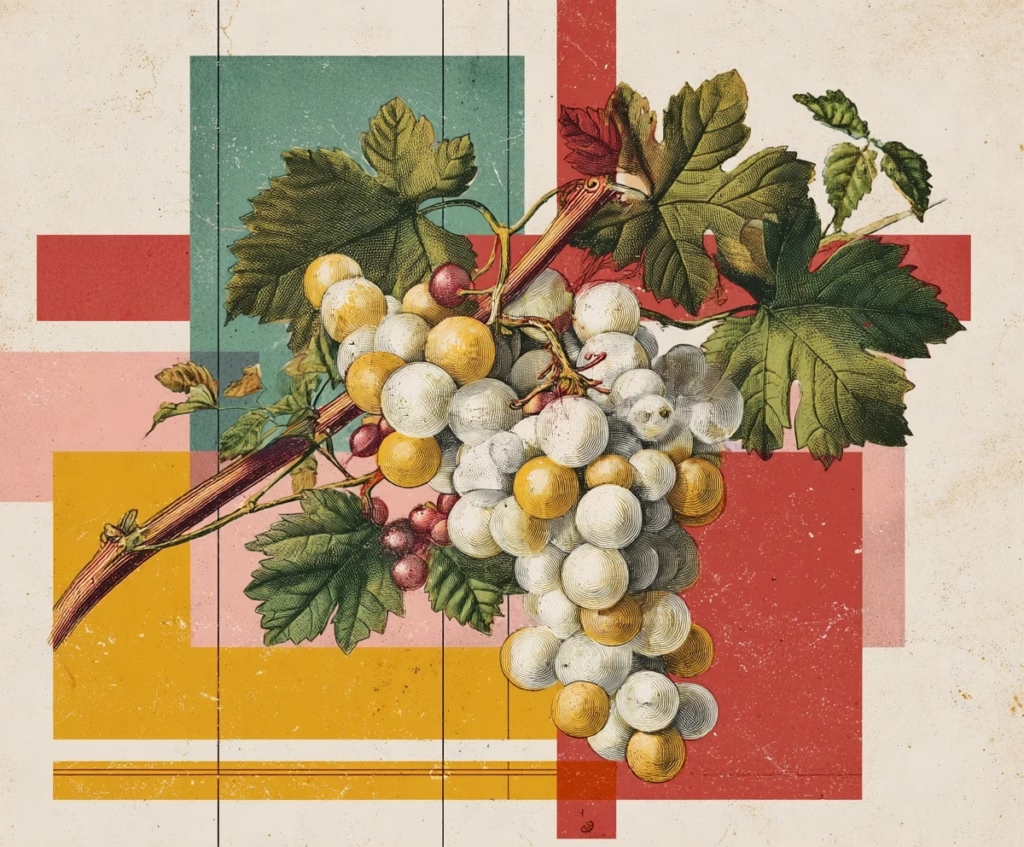From Hot to Cool to Continental: Key Wine Climates

From saline breeze to sunbeams, climatic factors are among of the biggest influences on how wine tastes—and how grapes grow. It affects everything from sugar and acid levels to when grapes are harvested and how long a wine can age. Whether you’re sipping a tart Riesling from Germany or a lush Shiraz from Australia, where the grapes grow up is key to the wine that ends up in your glass.
Let’s explore the major climate types in wine growing—cool, moderate (including maritime and Mediterranean), warm, hot, and continental—and how they shape what ends up in your glass.
🧊 Cool Climate Wines: Bright, Tense, and Elegant
Cool climate wine regions are typically found at higher latitudes or elevations, where average temperatures are lower and the growing season is shorter. Grapes ripen more slowly, which helps retain high levels of acidity and encourages the development of delicate aromas.
These wines often show crisp, refreshing acidity, lower alcohol levels, and subtle flavor profiles. In whites, they lean toward citrus, green fruit, and minerality rather than ripe or tropical fruit. Red wines from cool climates tend to be lighter in color and body, with savory, earthy nuances.
Regions that exemplify cool climate winemaking:
- Chablis, France – Linear, mineral Chardonnay
- Mosel, Germany – Razor-sharp Riesling
- Sonoma Coast, California – Bright, savory Pinot Noir
🌤️ Moderate Climate Wines: Balanced, Structured, and Food-Friendly
Moderate climates offer the goldilocks zone for grape growing—enough warmth for ripening, but not so much that acidity is lost. These climates typically have a well-paced growing season that produce wines that balance ripe fruit with freshness and structure, making them versatile and food-friendly.
Within the moderate category, there are two subtypes that are especially influential in wine: maritime and Mediterranean. Each brings its own twist on the moderate baseline.
🌊 Maritime Climate: Mild, Moist, and Expressive
Maritime climates are moderated by large bodies of water like oceans or seas, which reduce temperature extremes and prolong the growing season. This allows grapes to ripen slowly and steadily, often resulting in wines with well-integrated acidity and vibrant aromatics.
Because maritime regions tend to have higher humidity and more rainfall—especially near harvest—growers have to carefully manage disease risk and timing. But when done right, the wines have elegance, balance, and sometimes a whisper of sea spray.
Famous maritime wine regions include:
- Bordeaux, France – Structured red blends and age-worthy whites
- Willamette Valley, Oregon – Silky Pinot Noir with herbal complexity
- Rías Baixas, Spain – Saline, citrusy Albariño
- Marlborough, New Zealand – Zesty and zingy Sauvignon Blanc
🌿 Mediterranean Climate: Dry, Sunny, and Generous
Mediterranean wine regions are blessed with warm, dry summers and mild, wet winters. Rainfall during the growing season is minimal, making it easier to control grape development and avoid rot or dilution. The result is predictably ripe, healthy fruit year after year.
These wines tend to be fuller-bodied, with soft tannins and expressive fruit—think ripe red berries, sun-dried herbs, and a generous texture. Red wines often show spice and roundness, while whites can be floral and plush.
Top Mediterranean wine regions:
- Southern Rhône, France – Grenache-based blends with spice and earth
- Tuscany, Italy – Sangiovese-driven reds with cherry and herbs
- Central Coast, California – Rhône varietals and creamy Chardonnay
- Provence, France – Iconic dry rosé with garrigue notes
🌡️ Continental Climate Wines: Bold Swings, Big Structure
Continental climates experience the greatest seasonal and daily temperature shifts. Summers are hot, winters are cold, and nights can be much cooler than days. This wide range allows grapes to ripen fully during the day while retaining acidity overnight.
These wines are often expressive and structured, with a balance of fruit concentration and freshness. The risk of frost, hail, or rain at harvest makes continental viticulture challenging—but when conditions align, it produces some of the most age-worthy wines in the world.
Key continental wine regions:
- Burgundy, France – Elegant Pinot Noir and Chardonnay with tension
- Piedmont, Italy – Nebbiolo structured by cool nights and hot days
- Northern Rhône, France – Meaty, peppery Syrah
☀️ Warm Climate Wines: Rich, Ripe, and Bold
Warm climates see consistent sunshine and heat throughout the growing season. Grapes ripen quickly and fully, accumulating high levels of sugar and often losing some acidity along the way. The wines from these regions tend to be powerful, fruit-forward, and higher in alcohol.
Expect generous body, ripe or even tropical flavors, and a smooth, round mouthfeel. Tannins in red wines may be softer due to prolonged ripening, while whites can lean toward richness rather than freshness.
Examples of warm climate regions:
- Napa Valley, California – Bold, plush Cabernet Sauvignon
- Barossa Valley, Australia – Rich, spicy Shiraz
- Inland Sicily, Italy – Dense, sunbaked Nero d’Avola
🔥 Hot Climate Wines: Concentrated, Intense, and Often Fortified
Hot climate regions are found in areas with very high daytime temperatures and little seasonal variation. These conditions lead to early ripening and very high sugar levels in grapes. Acidity can drop off rapidly, so wines from hot climates are typically full-bodied, low in acid, and high in alcohol.
These wines often taste dense, sweet, or jammy. In some regions, heat-tolerant grape varieties are used, or the grapes are fortified to create stable, long-lived wines like Port.
Notable hot climate wine regions:
- Central Valley, California – Source of large-scale, fruit-driven wines
- La Mancha, Spain – Heat-hardy varieties like Airén and Garnacha
- Douro Valley, Portugal – Fortified Port wines with baked fruit character
Here’s a table and quick reference sheet for easy reference on the major wine climates and what each gives to the glass
| Climate Type | Typical Features | Wine Profile | Sample Regions |
| Cool | Slow ripening, high acidity, delicate aromas | Crisp, light-bodied, citrus/mineral notes | Chablis, Mosel, Sonoma Coast |
| Moderate – Maritime | Mild temps, long growing season, ocean influence | Balanced, fresh, sometimes saline | Bordeaux, Willamette Valley, Rías Baixas, Marlborough |
| Moderate – Mediterranean | Dry summers, mild winters, consistent sun | Full bodied, soft tannins, ripe fruit | Southern Rhône, Tuscany, Central Coast, Provence |
| Continental | Big temperature swings, short season, structure | Structured, age-worthy, balanced fruit & acid | Burgundy, Piedmont, Northern Rhône, Tokaj |
| Warm | Rapid ripening, high sugar, lower acid | Bold, fruity, high alcohol, smooth texture | Napa Valley, Barossa Valley, Sicily |
| Hot | Very hot, early harvest, high alcohol | Jammy, dense, often fortified | Central Valley CA, La Mancha, Duoro Valley |

🌍 One Grape, Many Climates: Chardonnay as a Climate Chameleon
Chardonnay is one of the world’s most widely planted white grapes—and part of its magic lies in how well it reflects climate. In cool regions, it’s crisp and mineral. In warm ones, it’s ripe and tropical. In moderate zones, it walks a balanced line between richness and freshness.
Cool Climate Chardonnay (e.g., Chablis, Tasmania)
Sharp and mineral-driven, with green apple, lemon peel, and oyster shell notes. High acid and minimal oak keep it precise and lean.
Moderate/Maritime Chardonnay (e.g., Burgundy, Sonoma Coast, New Zealand)
Elegant and layered, often showing lemon curd, hazelnut, and floral notes. These wines often see oak, but it’s subtle and integrated.
Warm Climate Chardonnay (e.g., Napa Valley, Margaret River)
Richer and more opulent, with pineapple, melon, and vanilla notes. Lower acidity and fuller body, often buttery from malolactic fermentation.
Hot Climate Chardonnay (e.g., Central Valley)
Fruity, soft, and often blended or used in bulk wine production. Can show overripe or flabby characteristics if not carefully managed.
Final Sip
Climate is the foundation of a wine’s identity. While grape variety and winemaking techniques matter, it’s climate that sets the stage for everything else. Understanding the difference between a maritime Pinot and a continental one, or how Chardonnay morphs from limey to luscious depending on heat, helps you drink more intentionally—and more deliciously.



